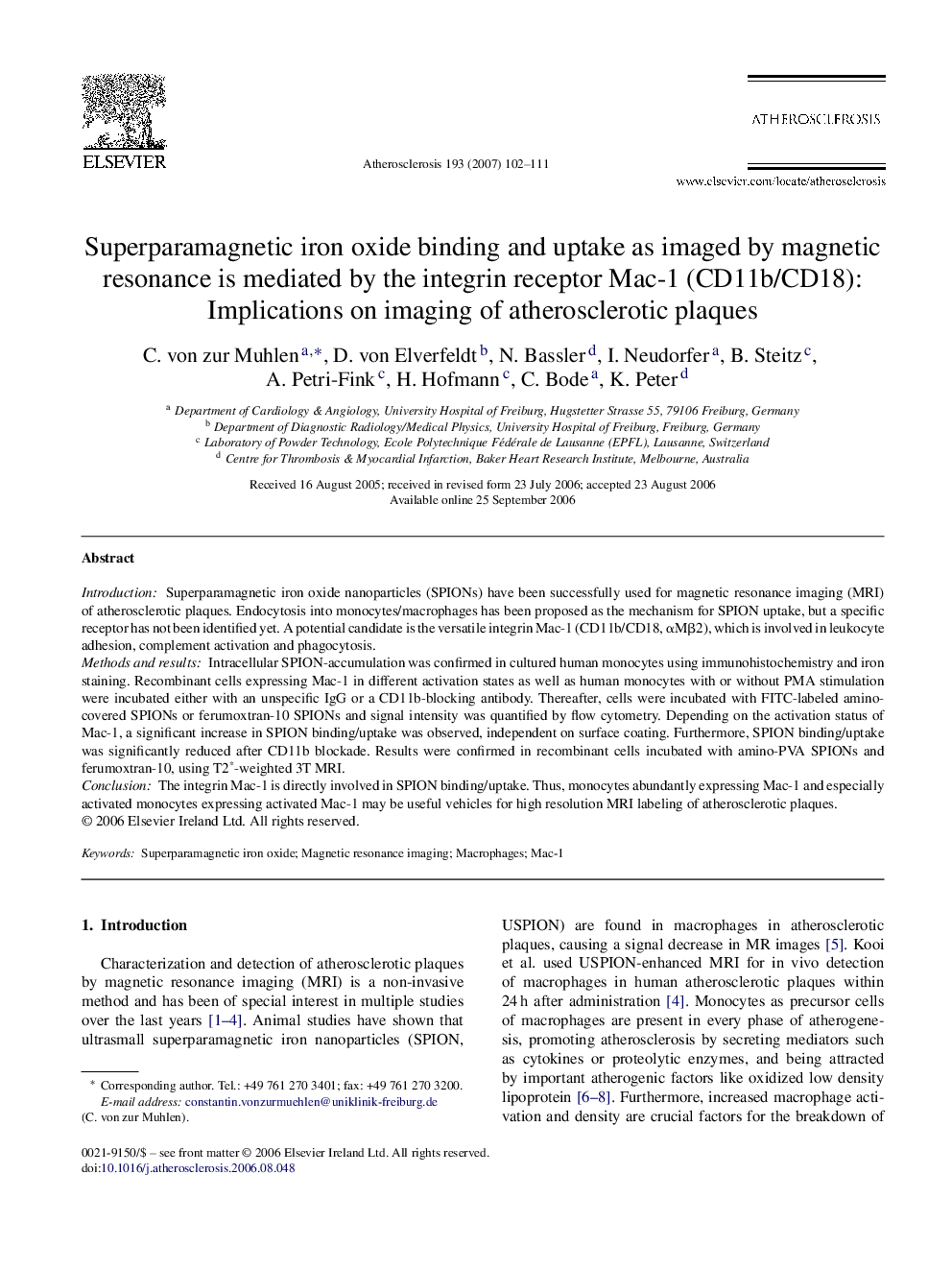| Article ID | Journal | Published Year | Pages | File Type |
|---|---|---|---|---|
| 2894695 | Atherosclerosis | 2007 | 10 Pages |
IntroductionSuperparamagnetic iron oxide nanoparticles (SPIONs) have been successfully used for magnetic resonance imaging (MRI) of atherosclerotic plaques. Endocytosis into monocytes/macrophages has been proposed as the mechanism for SPION uptake, but a specific receptor has not been identified yet. A potential candidate is the versatile integrin Mac-1 (CD11b/CD18, αMβ2), which is involved in leukocyte adhesion, complement activation and phagocytosis.Methods and resultsIntracellular SPION-accumulation was confirmed in cultured human monocytes using immunohistochemistry and iron staining. Recombinant cells expressing Mac-1 in different activation states as well as human monocytes with or without PMA stimulation were incubated either with an unspecific IgG or a CD11b-blocking antibody. Thereafter, cells were incubated with FITC-labeled amino-covered SPIONs or ferumoxtran-10 SPIONs and signal intensity was quantified by flow cytometry. Depending on the activation status of Mac-1, a significant increase in SPION binding/uptake was observed, independent on surface coating. Furthermore, SPION binding/uptake was significantly reduced after CD11b blockade. Results were confirmed in recombinant cells incubated with amino-PVA SPIONs and ferumoxtran-10, using T2*-weighted 3T MRI.ConclusionThe integrin Mac-1 is directly involved in SPION binding/uptake. Thus, monocytes abundantly expressing Mac-1 and especially activated monocytes expressing activated Mac-1 may be useful vehicles for high resolution MRI labeling of atherosclerotic plaques.
